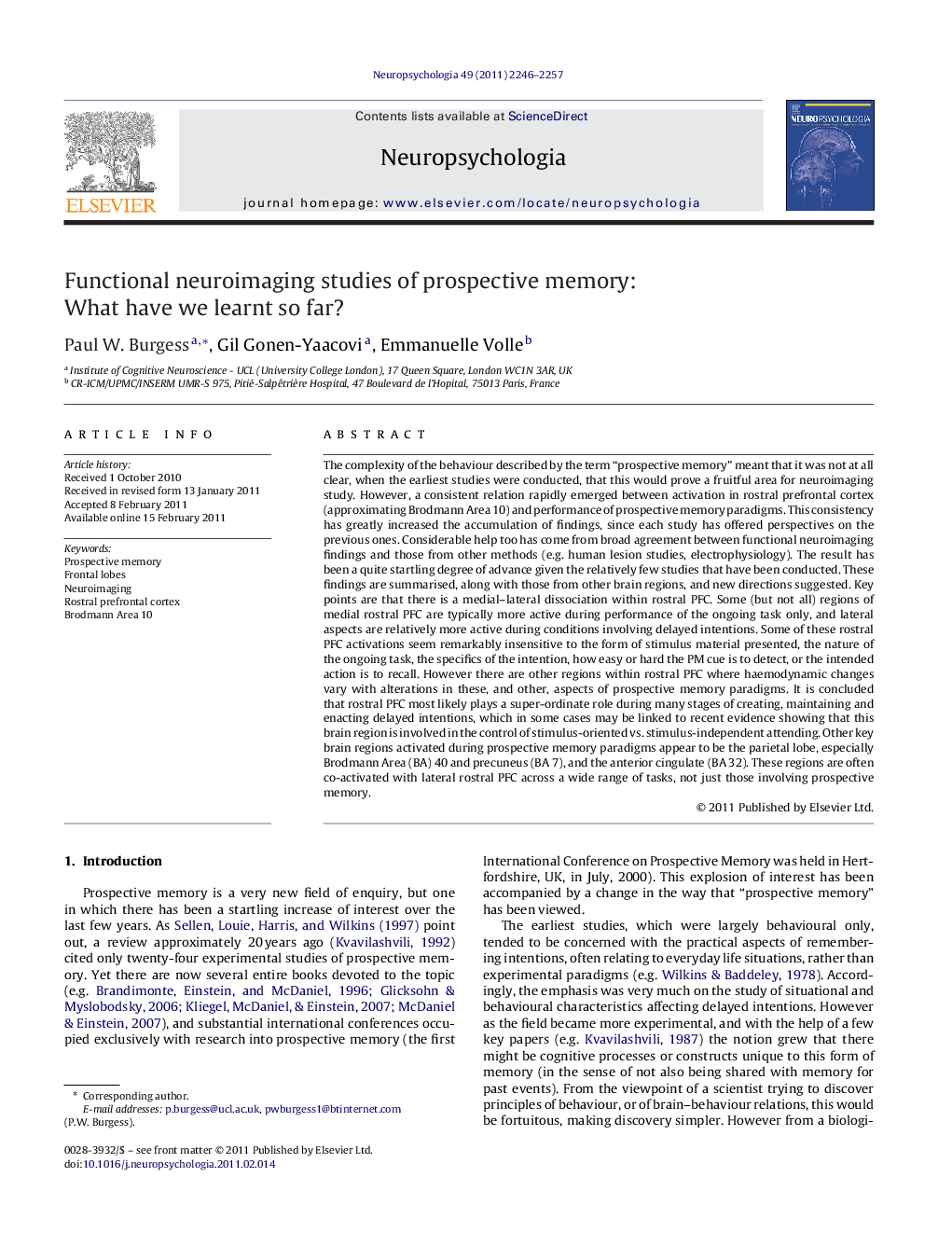| کد مقاله | کد نشریه | سال انتشار | مقاله انگلیسی | نسخه تمام متن |
|---|---|---|---|---|
| 10465384 | 925733 | 2011 | 12 صفحه PDF | دانلود رایگان |
عنوان انگلیسی مقاله ISI
Functional neuroimaging studies of prospective memory: What have we learnt so far?
دانلود مقاله + سفارش ترجمه
دانلود مقاله ISI انگلیسی
رایگان برای ایرانیان
کلمات کلیدی
موضوعات مرتبط
علوم زیستی و بیوفناوری
علم عصب شناسی
علوم اعصاب رفتاری
پیش نمایش صفحه اول مقاله

چکیده انگلیسی
The complexity of the behaviour described by the term “prospective memory” meant that it was not at all clear, when the earliest studies were conducted, that this would prove a fruitful area for neuroimaging study. However, a consistent relation rapidly emerged between activation in rostral prefrontal cortex (approximating Brodmann Area 10) and performance of prospective memory paradigms. This consistency has greatly increased the accumulation of findings, since each study has offered perspectives on the previous ones. Considerable help too has come from broad agreement between functional neuroimaging findings and those from other methods (e.g. human lesion studies, electrophysiology). The result has been a quite startling degree of advance given the relatively few studies that have been conducted. These findings are summarised, along with those from other brain regions, and new directions suggested. Key points are that there is a medial-lateral dissociation within rostral PFC. Some (but not all) regions of medial rostral PFC are typically more active during performance of the ongoing task only, and lateral aspects are relatively more active during conditions involving delayed intentions. Some of these rostral PFC activations seem remarkably insensitive to the form of stimulus material presented, the nature of the ongoing task, the specifics of the intention, how easy or hard the PM cue is to detect, or the intended action is to recall. However there are other regions within rostral PFC where haemodynamic changes vary with alterations in these, and other, aspects of prospective memory paradigms. It is concluded that rostral PFC most likely plays a super-ordinate role during many stages of creating, maintaining and enacting delayed intentions, which in some cases may be linked to recent evidence showing that this brain region is involved in the control of stimulus-oriented vs. stimulus-independent attending. Other key brain regions activated during prospective memory paradigms appear to be the parietal lobe, especially Brodmann Area (BA) 40 and precuneus (BA 7), and the anterior cingulate (BA 32). These regions are often co-activated with lateral rostral PFC across a wide range of tasks, not just those involving prospective memory.
ناشر
Database: Elsevier - ScienceDirect (ساینس دایرکت)
Journal: Neuropsychologia - Volume 49, Issue 8, July 2011, Pages 2246-2257
Journal: Neuropsychologia - Volume 49, Issue 8, July 2011, Pages 2246-2257
نویسندگان
Paul W. Burgess, Gil Gonen-Yaacovi, Emmanuelle Volle,